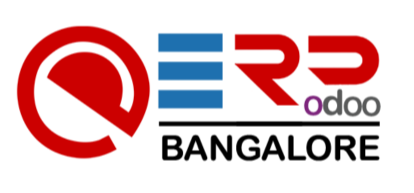Understanding Leads Scoring:
Definition and Purpose of Leads Scoring:

Lead scoring is a systematic approach used by businesses to evaluate the potential of a lead, typically based on various criteria such as demographics, behavior, and engagement with the brand. The primary purpose of lead scoring is to identify and prioritize leads that are most likely to convert into customers or take desired actions, thereby optimizing sales and marketing efforts.
By assigning numerical values or scores to leads, organizations can effectively segment and target their leads, ensuring that resources are allocated efficiently towards high-value opportunities. This process facilitates personalized and targeted communication with prospects, leading to higher conversion rates and improved ROI on marketing investments.
Benefits of Using Lead Scoring for Lead Assignment:

- Enhanced Efficiency: Lead scoring streamlines the lead assignment process by automating the evaluation and prioritization of leads. Sales teams can focus their efforts on leads with the highest potential, maximizing productivity and minimizing time spent on low-value prospects.
- Improved Sales Effectiveness: By identifying high-quality leads, sales teams can tailor their approach and messaging to better resonate with prospects’ needs and preferences. This personalized approach increases the likelihood of conversion and fosters stronger relationships with customers.
- Optimized Resource Allocation: Lead scoring enables organizations to allocate resources such as time, budget, and manpower more effectively. By concentrating efforts on leads with the highest scores, businesses can achieve better results with fewer resources.
- Better Collaboration Between Sales and Marketing: Lead scoring fosters alignment between sales and marketing teams by providing clear criteria for lead qualification. This alignment leads to smoother handoffs between departments and ensures that both teams are working towards common goals.
Common Methods and Techniques for Lead Scoring:
- Implicit Scoring: This method assigns scores based on prospect interactions and behavior, such as website visits, email opens, content downloads, and social media engagement. The frequency and depth of these interactions indicate the level of interest and engagement, influencing the lead score accordingly.
- Explicit Scoring: Explicit scoring involves gathering information directly from leads through forms, surveys, or other means. This information may include demographic details, firmographics, budget information, purchase intent, and more. By analyzing this data, organizations can assign scores based on the prospect’s fit with their ideal customer profile and buying signals.
- Predictive Scoring: Predictive scoring utilizes advanced analytics and machine learning algorithms to forecast the likelihood of conversion for each lead. By analyzing historical data and patterns, predictive scoring models can identify key attributes and behaviors that correlate with successful conversions, enabling more accurate lead prioritization.
- Behavioral Scoring: Behavioral scoring focuses on tracking specific actions and engagement metrics to gauge a lead’s level of interest and readiness to purchase. This may include factors such as time spent on the website, pages visited, webinar attendance, and responses to marketing campaigns. By monitoring these behaviors, organizations can dynamically adjust lead scores in real-time based on changing preferences and interactions.
Challenges and Considerations in Implementing Lead Scoring:

- Data Quality and Accuracy: Effective lead scoring relies on accurate and reliable data. Organizations may face challenges related to data hygiene, incomplete or outdated information, and inconsistencies across different sources. Ensuring data integrity and quality is essential for producing meaningful and actionable lead scores.
- Subjectivity and Bias: Lead scoring models may incorporate subjective criteria or biases that influence the scoring process. It’s crucial to periodically review and refine scoring criteria to minimize bias and ensure fairness in lead evaluation.
- Scalability and Flexibility: As businesses grow and evolve, their lead scoring needs may change. Scalability and flexibility are essential considerations to accommodate shifting priorities, new market dynamics, and evolving customer behaviors. Lead scoring models should be adaptable and easily configurable to meet changing requirements.
- Integration and Alignment: Seamless integration between marketing automation platforms, CRM systems, and other tools is critical for successful lead scoring implementation. Ensuring data flows smoothly between systems and aligning processes across departments is essential for maximizing the effectiveness of lead scoring initiatives.
- Continuous Optimization: Lead scoring is not a one-time exercise but an ongoing process that requires continuous monitoring, analysis, and optimization. Organizations should regularly review and refine their scoring models based on feedback, performance metrics, and market dynamics to ensure relevance and accuracy.
Lead scoring is a powerful tool that empowers organizations to prioritize and focus their efforts on leads with the highest potential for conversion. By leveraging data-driven insights and advanced analytics, businesses can enhance sales efficiency, improve conversion rates, and drive revenue growth. However, successful implementation requires careful consideration of various factors, including data quality, scoring methods, integration, and ongoing optimization. With a strategic approach and robust infrastructure in place, lead scoring can become a cornerstone of modern sales and marketing strategies, driving sustainable business success in today’s competitive landscape.
Components of an Effective Lead Scoring Model
Lead scoring is a crucial aspect of any successful sales and marketing strategy. It enables businesses to prioritize and focus their efforts on leads that are most likely to convert into customers. An effective lead scoring model comprises several key components that collectively provide insights into the quality and readiness of a lead to make a purchase. Here are the essential elements:
-
Demographic Criteria:
Demographic criteria encompass various factors related to the lead’s characteristics, such as industry, company size, and geographical location. Understanding these demographic details helps in segmenting leads based on their relevance to the business. For instance, a B2B software company might prioritize leads from technology firms over leads from non-tech industries.
-
Firmographic Criteria:
Firmographic criteria pertain to attributes associated with the prospect’s organization. This includes parameters like revenue, employee count, funding status, and industry vertical. Firmographic data provides insights into the potential value of a lead and their fit with the company’s target market. For example, a startup may be more interested in leads from early-stage companies with a high growth potential.
-
Behavioral Criteria:
Behavioral criteria focus on the actions taken by the lead that indicate their level of interest and engagement. These actions can include website visits, email interactions, webinar attendance, content downloads, and social media engagement. By tracking these behaviors, businesses can gauge the level of interest and intent of the lead, allowing them to tailor their outreach efforts accordingly.
-
Engagement Scoring:
Engagement scoring involves quantifying the level of interaction and engagement exhibited by the lead across various touchpoints. Each interaction is assigned a score based on its significance and relevance to the sales process. For instance, attending a product demo might be assigned a higher score than simply opening an email. By assigning numerical values to these engagements, businesses can prioritize leads based on their engagement level and readiness to purchase.
-
Customization and Fine-Tuning:
One size does not fit all when it comes to lead scoring. It’s essential to customize and fine-tune the scoring model to align with the unique needs and priorities of the business. This involves analyzing past data, gathering feedback from sales teams, and continuously iterating on the scoring criteria to ensure its accuracy and effectiveness. A well-tailored scoring model leads to more accurate predictions and better allocation of resources towards high-potential leads.
Integrating Lead Scoring into Odoo:
Overview of Odoo’s CRM Module and its Capabilities:
Odoo’s CRM module serves as a centralized platform for managing customer interactions, tracking leads, and nurturing opportunities. It offers an intuitive interface with customizable dashboards, enabling users to visualize sales pipelines, monitor activities, and analyze performance metrics. Key features of Odoo’s CRM module include:
- Lead Management: Capture leads from various sources, including website inquiries, email campaigns, and social media channels. Leads are categorized and tracked through the sales funnel, facilitating targeted engagement and follow-ups.
- Opportunity Tracking: Convert qualified leads into opportunities and manage them through various stages of the sales cycle. Odoo allows users to assign tasks, schedule meetings, and collaborate with team members to progress opportunities effectively.
- Email Integration: Seamlessly integrate email communication within the CRM module, enabling users to send personalized emails, track interactions, and automate follow-up sequences. This integration enhances communication efficiency and ensures timely responses to leads and prospects.
- Reporting and Analytics: Gain insights into sales performance, pipeline dynamics, and revenue forecasts through customizable reports and analytics dashboards. Odoo’s CRM module provides actionable data to optimize sales strategies and resource allocation.
Configuring Lead Scoring Rules and Criteria in Odoo:
- Effective lead scoring hinges upon defining relevant criteria and assigning appropriate weights to each criterion based on its significance in predicting lead quality. Odoo facilitates the configuration of lead scoring rules through a user-friendly interface, allowing businesses to tailor scoring criteria to their specific requirements. Key steps in configuring lead scoring rules in Odoo include:
- Define Scoring Criteria: Identify factors indicative of lead quality, such as demographic attributes, firmographic data, engagement levels, and behavioral signals. These criteria may include parameters like industry, company size, website interactions, email engagement, and past purchase history.
- Assign Weightage: Assign numerical weights to each scoring criterion to reflect its relative importance in evaluating lead quality. For instance, attributes such as decision-maker role or budget availability may carry higher weights than less decisive factors.
- Set Thresholds: Establish threshold values to classify leads into different categories, such as hot, warm, or cold leads, based on their cumulative score. Thresholds define the level of readiness or propensity to purchase associated with each lead category.
Mapping Lead Scoring Criteria to Odoo’s Data Fields and Attributes:
Odoo’s flexible architecture allows users to map lead scoring criteria to existing data fields and attributes within the CRM module. By aligning scoring criteria with relevant data points, businesses ensure consistency and accuracy in lead evaluation. Common data fields and attributes in Odoo CRM that are conducive to lead scoring include:
- Contact Information: Capture and analyze contact details, including name, email address, phone number, and location, to assess lead relevance and engagement.
- Company Details: Evaluate firmographic data such as industry vertical, company size, geographic location, and annual revenue to gauge the potential value of the lead.
- Activity History: Track interactions and engagement activities performed by leads, including website visits, email opens, link clicks, and event registrations, to measure interest and intent.
- Opportunity Stage: Monitor the progression of leads through the sales pipeline and assign scores based on the current stage of the opportunity, indicating readiness for conversion.
Automating Lead Scoring Calculations and Updates:
To streamline lead scoring processes and ensure real-time responsiveness to lead interactions, automation plays a pivotal role. Odoo offers automation capabilities through workflows, triggers, and scheduled actions, enabling automatic calculation and updating of lead scores based on predefined rules. Key automation strategies for lead scoring in Odoo include:
- Workflow Automation: Design sequential workflows that trigger lead scoring calculations based on predefined conditions and actions. For example, automate score adjustments when leads reach specific milestones or exhibit certain behaviors.
- Event-based Triggers: Define triggers that initiate score updates in response to specific events or interactions, such as email opens, form submissions, or webinar attendance.
- Scheduled Updates: Implement scheduled actions to periodically reassess and update lead scores based on evolving criteria or changing market dynamics. Scheduled updates ensure that lead scores remain accurate and reflective of current circumstances.
Testing and Validating the Effectiveness of the Lead Scoring Model within Odoo:
- Continuous evaluation and refinement of the lead scoring model are essential to ensure its effectiveness in predicting lead quality and driving actionable insights. Odoo provides tools for testing and validating the lead scoring model, enabling users to assess its predictive accuracy and performance. Key strategies for testing and validating the lead scoring model within Odoo include:
- Split Testing: Conduct A/B tests by segmenting leads into control and test groups, applying different scoring models, and comparing their outcomes in terms of conversion rates, sales velocity, and revenue generated.
- Historical Analysis: Analyze historical lead data and compare actual conversion outcomes with predicted lead scores to evaluate the model’s predictive accuracy and identify areas for improvement.
- Feedback Loops: Solicit feedback from sales teams regarding the effectiveness of lead scoring in prioritizing leads and facilitating conversions. Incorporate qualitative insights to refine scoring criteria and enhance model performance.
- Iterative Optimization: Iterate on the lead scoring model iteratively based on test results, feedback, and performance metrics. Continuously refine scoring criteria, adjust weightages, and fine-tune automation rules to optimize predictive accuracy and alignment with business goals.
Implementing Lead Assignment Based on Scoring in Odoo:
-
Setting Up Automated Lead Assignment Rules in Odoo
The first step in implementing lead assignment based on scoring in Odoo is to configure automated lead assignment rules. Odoo provides a user-friendly interface for defining these rules, allowing administrators to specify conditions based on lead attributes and scoring parameters. This could include criteria such as lead source, industry, geographical location, engagement level, and more.
-
Defining Criteria for Lead Assignment Based on Lead Scores
Central to the effectiveness of lead assignment in Odoo is the establishment of criteria based on lead scores. Lead scoring involves assigning numerical values to leads based on their characteristics and behaviors, indicating their likelihood to convert into customers. By defining thresholds for lead scores, businesses can determine which leads warrant immediate attention and which ones require further nurturing.
-
Establishing Routing Rules and Workflows
Once the criteria for lead assignment are defined, Odoo enables the creation of routing rules and workflows to automate the allocation of leads to sales representatives or teams. These rules can be configured to prioritize leads with higher scores, ensuring that sales resources are allocated efficiently and effectively. Additionally, workflows can be designed to trigger notifications and reminders to sales personnel, facilitating timely follow-ups and engagement with leads.
-
Monitoring and Tracking Lead Assignment Activities
Odoo provides comprehensive tools for monitoring and tracking lead assignment activities within the system. Administrators can generate reports and dashboards to gain insights into lead distribution, conversion rates, and the performance of sales teams. Real-time visibility into lead assignment activities empowers businesses to identify bottlenecks, address challenges, and optimize processes for better outcomes.
-
Fine-Tuning and Optimizing Lead Assignment Processes
Continuous improvement is essential for maximizing the effectiveness of lead assignment in Odoo. By analyzing performance metrics and gathering feedback from sales teams, businesses can identify areas for refinement and optimization. This may involve adjusting scoring criteria, revising routing rules, or providing additional training and support to sales personnel. Through iterative refinement, businesses can enhance lead assignment processes to drive greater efficiency and success.
Best Practices and Tips for Success:
Continuous Refinement and Updating of Lead Scoring Model:
Lead scoring is not a one-time task; it’s an ongoing process that requires constant refinement and updating. Feedback from both sales and marketing teams, as well as performance data, should be regularly analyzed to identify areas for improvement. This iterative approach ensures that the lead scoring model remains accurate and relevant as market conditions and customer behaviors change over time.
- Regular Review Meetings: Schedule regular meetings involving sales, marketing, and other relevant departments to review the performance of the lead scoring model. Discuss feedback, identify any discrepancies or inefficiencies, and brainstorm ideas for improvement.
- Data-Driven Adjustments: Base refinements on concrete data rather than assumptions. Analyze lead conversion rates, sales velocity, and other relevant metrics to identify patterns and trends that can inform adjustments to the scoring criteria.
- Testing and Validation: Before implementing major changes, conduct A/B tests or pilot programs to validate the effectiveness of proposed adjustments. This helps mitigate risks and ensures that changes positively impact lead qualification and conversion rates.
Collaboration Across Departments for Alignment and Effectiveness:
Effective lead scoring requires close collaboration between sales, marketing, and other relevant departments to ensure alignment and effectiveness throughout the entire customer journey. Siloed approaches can lead to discrepancies in lead qualification criteria and undermine overall sales performance.
- Establish Clear Communication Channels: Foster open communication channels between sales and marketing teams to exchange insights, feedback, and updates related to lead scoring. Regular meetings, shared documents, and collaboration tools can facilitate this process.
- Define Shared Goals and Objectives: Align sales and marketing teams around common goals and objectives related to lead generation, qualification, and conversion. This promotes a unified approach and fosters a sense of shared responsibility for driving revenue growth.
- Cross-Functional Training Workshops: Conduct cross-functional training workshops to educate team members on the importance of lead scoring and how it impacts their respective roles. This promotes a deeper understanding of the lead scoring process and encourages collaboration towards common objectives.
Training and Support for Sales Teams on Utilizing Lead Scoring Insights:
Sales teams play a critical role in leveraging lead scoring insights to prioritize leads, tailor their approach, and increase conversion rates. Providing comprehensive training and ongoing support is essential to ensure that sales representatives fully understand and effectively utilize lead scoring insights in their workflow.
- Training Programs: Develop training programs that cover the fundamentals of lead scoring, how to interpret lead scores, and best practices for incorporating lead scoring insights into sales strategies. Offer both initial training for new hires and ongoing refresher courses for existing team members.
- Sales Enablement Materials: Provide sales teams with access to sales enablement materials that highlight the value of lead scoring and provide practical tips for leveraging lead scoring insights in customer interactions. This may include playbooks, case studies, and sales scripts tailored to different lead segments.
- One-on-One Coaching: Offer personalized coaching sessions where sales representatives can receive individualized guidance on how to effectively leverage lead scoring insights in their specific sales scenarios. This hands-on approach helps reinforce learning and address any challenges or questions that arise.
Leveraging Odoo’s Reporting and Analytics Capabilities:
Odoo’s reporting and analytics capabilities offer valuable tools for gaining insights into lead assignment performance and optimizing lead scoring strategies accordingly. By harnessing these features effectively, organizations can identify trends, track key metrics, and make data-driven decisions to enhance lead scoring effectiveness.
- Customized Dashboards: Create customized dashboards within Odoo to track key performance indicators (KPIs) related to lead scoring, such as lead conversion rates, lead velocity, and pipeline velocity. This provides real-time visibility into the health of the sales pipeline and helps identify areas for improvement.
- Advanced Analytics Tools: Take advantage of Odoo’s advanced analytics tools, such as predictive analytics and machine learning algorithms, to uncover hidden patterns and insights in lead data. These tools can help identify predictive indicators of lead quality and inform adjustments to the lead scoring model.
- Automated Reporting: Set up automated reporting processes within Odoo to generate regular reports on lead scoring performance and distribute them to relevant stakeholders. This streamlines the reporting process and ensures that stakeholders have access to up-to-date information to inform decision-making.
Staying Agile and Adaptable to Evolving Market Dynamics:
In today’s rapidly changing business environment, organizations must remain agile and adaptable to evolving market dynamics and customer behavior patterns. This requires a willingness to iterate on lead scoring strategies, embrace innovation, and pivot as needed to stay ahead of the competition.
- Monitor Market Trends: Stay abreast of industry trends, competitor activities, and shifts in customer preferences that may impact lead scoring effectiveness. Regularly monitor external factors and be prepared to adjust lead scoring criteria and strategies accordingly.
- Feedback Loops: Establish feedback loops with customers, sales teams, and other stakeholders to gather insights into changing needs and preferences. Use this feedback to refine lead scoring criteria, identify new lead sources, and tailor marketing messages to resonate with target audiences.
- Experimentation and Innovation: Foster a culture of experimentation and innovation within the organization, encouraging teams to explore new ideas, technologies, and approaches to lead scoring. Embrace failure as a learning opportunity and continuously iterate on strategies to drive improvement.
Conclusion:
Effective lead assignment is a cornerstone of successful sales and marketing operations, and lead scoring offers a data-driven approach to enhance this process. By implementing lead assignment based on scoring in Odoo, businesses can streamline their operations, improve sales efficiency, and ultimately drive higher revenue growth. With the insights and guidelines provided in this guide, businesses can harness the full potential of lead scoring within the Odoo ecosystem and unlock new opportunities for business success.







